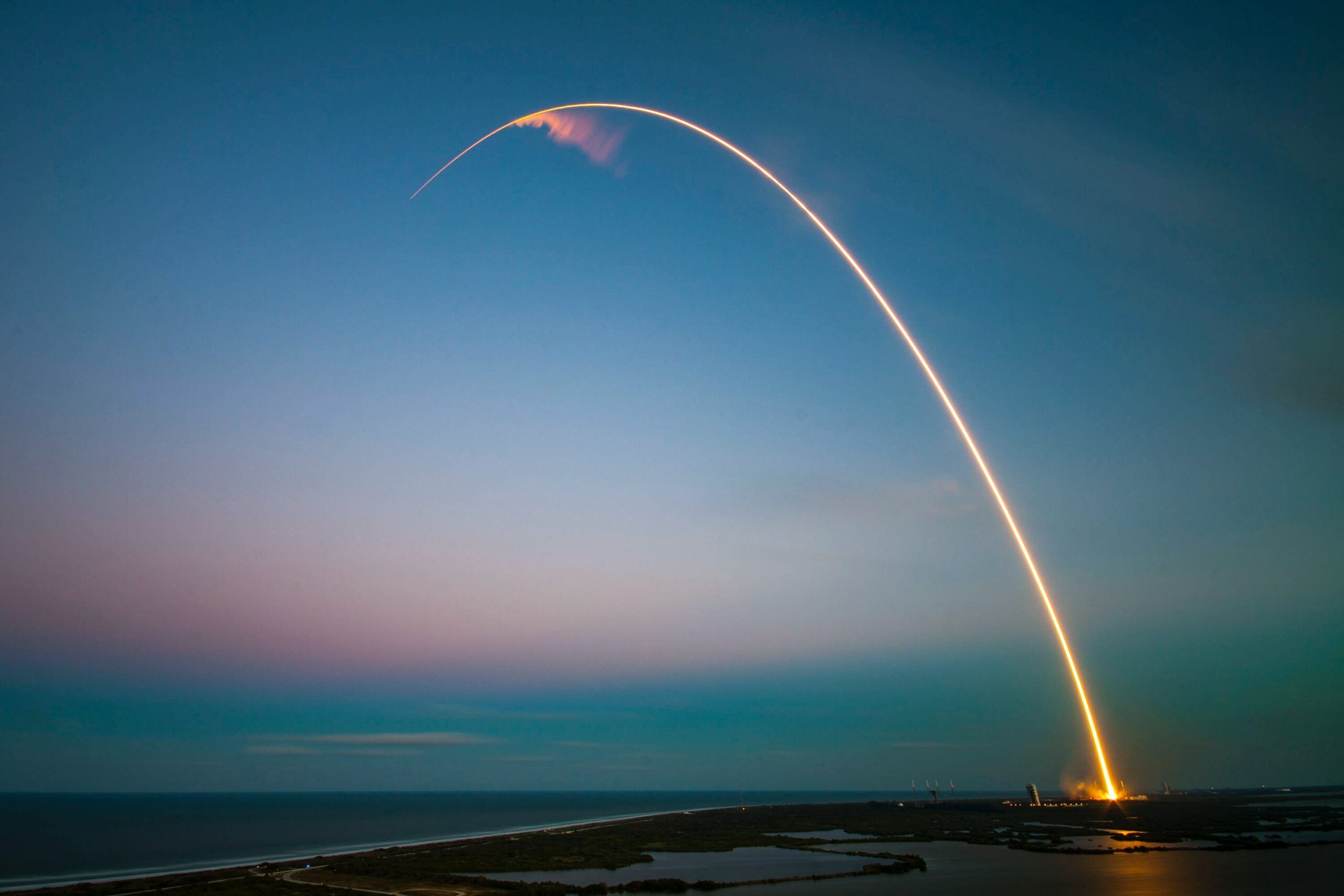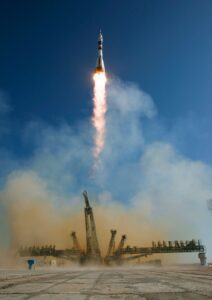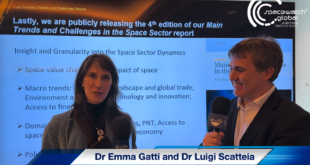By Sabine Pongruber
This is the second part of a two parts essay on the true origin of the numbers related to the Space Economy. The read the first part please click here.

How big is the space economy? An educated guess
The global space economy has been estimated to reach 1 trillion USD of revenues by 2040 (Morgan Stanley, UBS), but such numbers have been generated starting from a 2016 baseline of 340 billion USD for the satellite industry only and adding all the other marginal sectors in an unclear fashion. A trillion USD revenue implies a 5% year-over-year annual growth rate, which should leave us at a space sector size of 456 billion USD by the end of 2022. However, today the space domain is valued at approximately 386 billion USD in global revenue, which means that either it is not generating enough revenue, or it’s not growing as fast as the predicted 5%. It is very difficult to trace back the real source of these data and the parameters used for such estimations, and even more difficult is to verify the revenues of the space industry, since very few space companies are publicly traded. However, it is possible to follow the growth, and try to qualitatively assess the revenues by observing the investments.
Let’s start from the available and verifiable statistics, alas the present-day data. Bryce Tech and the Satellite Industry Association (SIA) declared 386 billion USD in revenue with 72% of the revenues generated by the satellite industry (and this includes ground equipment, launch, and manufacturing). This is the most quoted number. However, McKinsey in its “The role of space in driving sustainability, security, and development on Earth” (2022) identifies the sector size to be at 447 billion USD in revenues. So which number is legitimate? Because the revenues and figures are unclear, we are operating in an “educated guess” mode.
Contrary to Bryce Tech/SIA, the McKinsey report lists its sources (Space Foundation, Euroconsult), adds insights into its client base, and merges them with data provided by Crunchbase data, which is a good tool to obtain a fair representation of all sorts of global public and private company’s financials. Therefore, the latter seems a better-educated guess to me.
Investors’ money indicates growth within the domain

If you want to know where growth is – follow the money. This was true for Al Capone – who was caught by the FBI because of income tax money traces or lack of – and it is true for any business. Even if we don’t have precise data on revenues, investors’ money indicates that growth is happening.
The satellite market is undoubtedly booming, as CubeSats and nanosats made satellites cheaper, more accessible, more flexible, and easier to launch. Several other potentially game-changing space applications are waiting to lift off and will contribute to the predicted space economy growth. Among these, Space-based Solar Power, an innovative way to provide energy from space to power the world, said to be worth 23 billion USD by 2040, marking this as the second biggest space segment just ahead of Space Logistics (21 billion USD) (as per Citigroup´s “Space The Dawn of a New Age” report). Other space applications have the potential to enter the game, but they are still in their early stages, such as microgravity engineering, in-space manufacturing, asteroid mining, and space tourism. These activities are all predicted to generate around 100 billion USD revenue by 2040, or 1% of the predicted and generally accepted 1 trillion.
ESPI, in their “Space Venture Europe 2021” report, highlighted as the trend of private companies leveraging public funding and private investments increased by 14 % year-over-year. Noticeably, 58% of the money went into upstream applications and 42% into downstream. Between 2014 and 2021 roughly 2 billion EUR have been invested in Europe by private players, such as venture capitalists. Last year 611.5 million EUR were invested and distributed among 86 deals. Much less than in the US, but the numbers are increasing over time and the industry potential has not reached its peak yet. Germany, Switzerland, Spain, and the Netherlands are taking Space to the next level, and they are acting as role models for space investment forging a path for other nations. In Europe (or within the European geographical continent, if we want to respect the new post-Brexit geopolitical boundaries) the United Kingdom is still the number one investor. Its space investments are just shy of 250 million Euro in 2021 alone, which is as much as all the above-mentioned nations combined investments. This makes Europe the second biggest space player after the United States when it comes to private investments, while other countries such as South Korea, Singapore, Israel, Australia, Canada, and India are gaining traction. China´s National Space Program vision, set by President Xi Jinping, aims “To explore the vast cosmos, develop the space industry and build China into a space power is our eternal dream,” with a strong focus on space presence and without providing exact investment figures.
Expansion into the non-Space industry: a fundamental requirement

Activities such as microgravity engineering, in-space manufacturing, asteroid mining, and space tourism are predicted to generate around 100 billion USD revenue by 2040, or 1% of the projected and generally accepted 1 trillion. Where will Space take the remaining 99%? Partly from the satellite industry, but the real growth will require expansion into new fields and industries, increasing the total addressable market (TAM). The path toward connecting the Space domain with the non-space industry is through establishing dialogues between space companies and end-users while focusing on the demonstrated business benefits to decision-makers.
If space technology will be able to increase revenues and profits and/or will be able to boost competitive advantages for non-space industries, then we will face a win-win situation. This will require a good understanding of the economic challenges and needs of the world outside the space business, and a solid network of industry partners beyond the space industry. Ultimately, selling practical solutions, not only technology, and the capability to effectively work with multinational cooperations scale for product developments will be keys to succeed in the future.
The path toward connecting the Space domain with the non-space industry is through establishing dialogues between space companies and end-users and focusing on the demonstrated business benefits to decision-makers.
Bigger than 1 trillion
Earth observation is currently at the forefront of commercialization activities, but soon this busy marketplace will consolidate and fewer players will share larger slices of the cake. However, this is not the only way forward. The more outside space industry players will learn about space technology, the more unknown opportunities and ideas will be born and appetites for solutions from space will grow. This will result in a shift from space pushing to commercialize space technology towards a pulling effect by end-user obtaining new ideas once they understand what space technology can do for them.
I bet that innovative materials and big data, including Artificial Intelligence (AI), will be the products that will harbour the most interest from the non-space industry. There is not a single manufacturing company in the world that is not on a constant hunt for new suppliers and improved materials quality. Expertise and experience from high-performing space technology can be utilized to support such supplier base expansion.
Another challenge for non-space companies is data management, and no one deals with a huge amount of data like the space industry does, especially when it comes to earth observation. I can see a potential for a classic “spillover” effect where the general industry will be able to use algorithms developed by the space domain to support better data knowledge and decision-making.
In conclusion, the Space economy has the potential to be much bigger than predicted – on the condition that the industry will understand users’ business needs and will provide solutions that can positively affect revenue, profit, or competitive advantage for non-space companies. This shift from pure technology focus toward day-to-day problem solving in “traditional industries” will help generate revenues and satisfy investors on both sides.
As of today, revenue facts and figures are so difficult to trace and verify that the question of how big the space economy is remains unanswered. What we know for certain is that there are giant investments in the space domain, and this will irremediably facilitate growth and add pressure to satisfy investor expectations. Ultimately, Elon Musk once said during an interview in 2021 that “At SpaceX, we specialize in turning things from impossible to late”. Maybe it’s just a matter of time before the space economy starts delivering what it has promised.
Sources:
Bryce Tech: Start-Up Space Update on investment in commercial space ventures, April 2022, https://brycetech.com/reports/report-documents/Bryce_Start_Up_Space_2022.pdf
CITI GPS: SPACE: The Dawn of a New Age, May 2022, https://icg.citi.com/icghome/what-we-think/citigps/insights/space_20220509
China National Space Agency: “China’s Space Program: A 2021 Perspective”, January 2022, http://www.cnsa.gov.cn/english/n6465645/n6465648/c6813088/content.html
European Space Policy Institute (ESPI): Space Venture Europe 2021, June 2022, https://www.espi.or.at/reports/space-venture-europe-2021/
McKinsey & Company:The role of space in driving sustainability, security, and development on Earth, May 2022, https://www.mckinsey.com/industries/aerospace-and-defense/our-insights/the-role-of-space-in-driving-sustainability-security-and-development-on-earth
Morgan Stanley: Space: Investment Implications of the Final Frontier, November 2017, http://commercialspace.pbworks.com/w/file/fetch/128577051/2017-11-01%20Morgan%20Stanley%20Space_%20Investment%20Implications%20of%20the%20Final%20Frontier.pdf
UBS: Longer Term Investment: Space, November 2018, https://www.ubs.com/content/dam/WealthManagementAmericas/documents/space-p.pdf
Disclaimer:
The views expressed in this article are those of the author alone. The author or its company´s affiliates are not commercially or financially related of any sort to the companies or institutions mentioned above.

Sabine Pongruber is an Energy industry and manufacturing veteran, who spent 16 years in global leadership roles at General Electric. In 2019 she founded WEME Global, a management consulting company to drive growth for customers by scaling up operations and elevating operational excellence through lean and efficient processes. Since 2022 she is venturing into the space industry, building bridges between established industries and new space. She is based in Salzburg and spends most of her free time in the mountains. That´s the closest you can get to space by yourself, she says.





